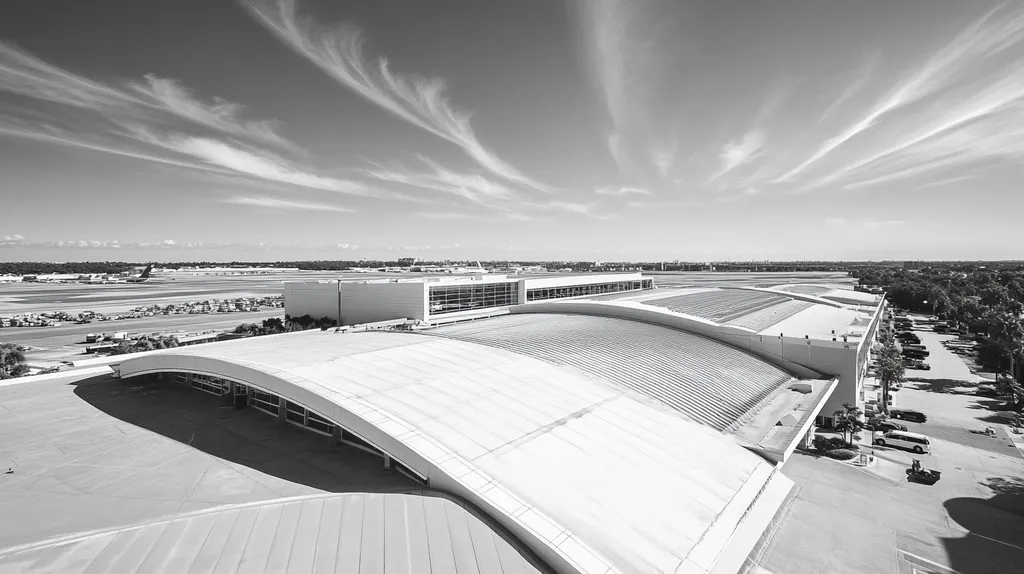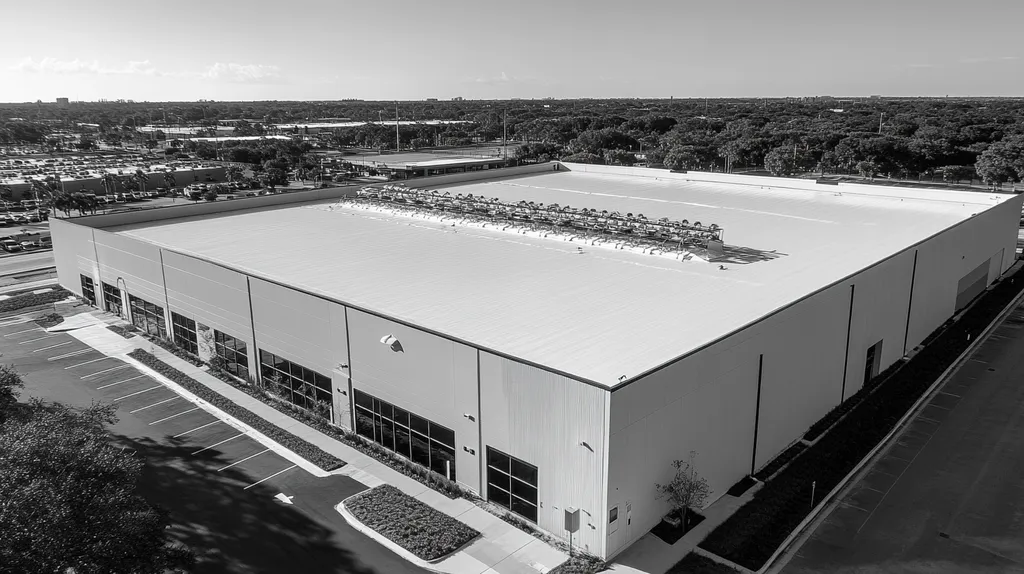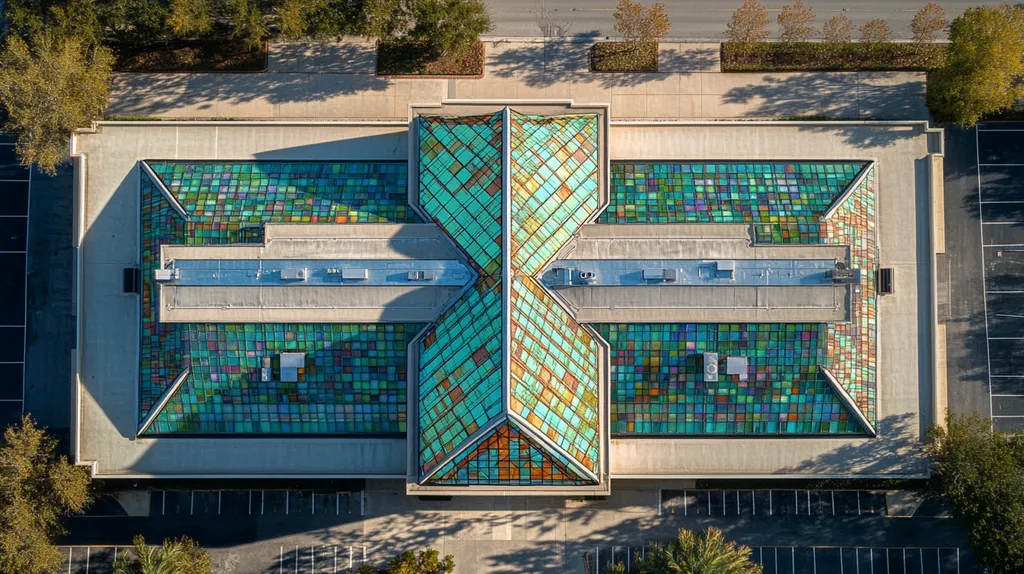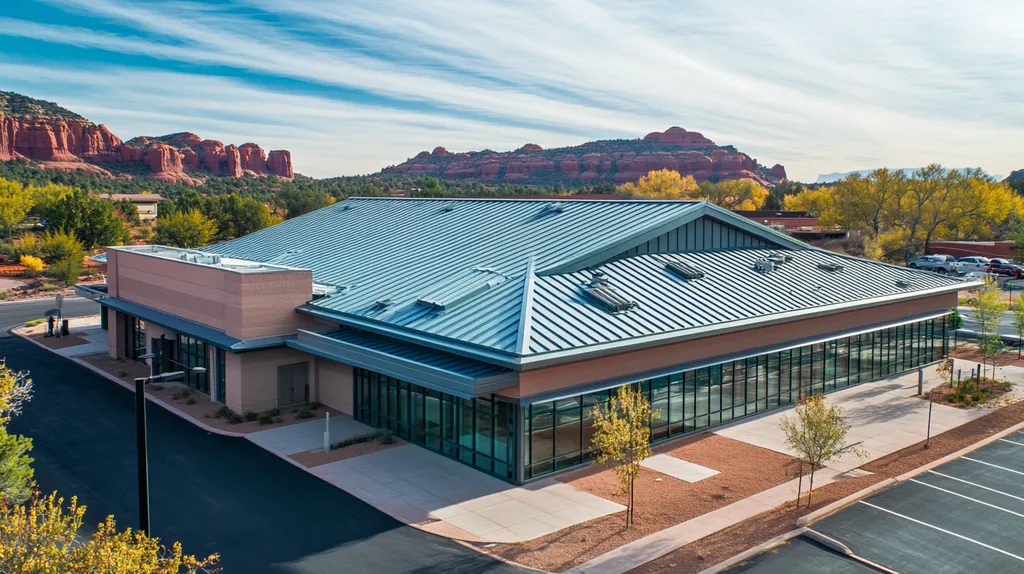Every year, commercial roof installations cost businesses millions in lost productivity and disrupted operations. Studies show that poor planning during roof replacements can reduce worker efficiency by up to 27% and drive away customers.
For facility managers, minimizing these disruptions isn’t just about maintaining comfort—it’s about protecting the bottom line. The key lies in strategic scheduling, clear communication protocols, and robust contingency planning.
This comprehensive guide provides facility managers with proven strategies and actionable checklists to keep operations running smoothly during roof installations while ensuring safety, compliance, and project efficiency.
SECTION 1: PERFORMANCE FACTORS
When it comes to commercial roof installation, efficiency is vital to minimizing disruptions in business operations. Each second spent dealing with construction noise can rack up costs, affecting productivity and potentially driving clients away. Recognizing the key performance factors involved is essential for a seamless installation process. This section explores strategies for understanding material impact, optimizing scheduling, and enhancing coordination to keep your operations uninterrupted.
Assessing Material Noise and Installation Impact
The choice of roofing materials can significantly influence noise levels during installation. For instance, metal systems might generate more sound than quieter options like TPO or EPDM. By understanding these acoustic differences, facility managers can appropriately prepare their teams and clientele for any potential disturbances.
Additionally, selecting installation methods that are less intrusive, such as overlay systems, can lessen noise and reduce disruptions. Prioritizing quieter materials and techniques ensures that work is conducted during business hours with minimal impact on daily activities.
A comprehensive site assessment can also point out opportunities to minimize disruption. For example, using aerial installation methods can drastically reduce ground-level noise and elevate efficiency. By making informed choices about materials and techniques, facility managers can lay the groundwork for a smooth installation experience.
Key Action Items
Scheduling for Minimal Operational Interruptions
Strategic scheduling is crucial for roof installations that don’t disrupt everyday business activities. Engaging closely with contractors allows for alignment of roofing work during quieter times, such as weekends or holidays, which helps keep employees focused and clients undisturbed.
Effective communication with staff and clients is equally essential. Providing clear advance notice regarding installation timelines allows everyone to make necessary adjustments and plan accordingly. A well-structured schedule can significantly reduce the frustrations associated with roofing work.
It’s also important to factor in weather conditions when setting a timetable. Inclement weather can hinder progress and extend project timelines, so being flexible and adaptable is key to minimizing disruption. A coordinated schedule balances work with daily operations, allowing business as usual to continue.
Key Action Items
Coordination of Work Phases and Site Access
Coordinating work phases efficiently is key to managing potential construction disruptions. When tasks are organized in logical sequences, overlaps and chaotic situations are minimized, leading to a smoother installation process. This organized approach can transform the construction experience from overwhelming to manageable.
Site access also plays a crucial role in maintaining a safe and efficient work environment. By restricting access to certain areas, facility managers can protect employees while contractors complete installations more effectively. Clearly marked pathways enhance safety and organization on-site.
Regular communication between contractors and facility managers is vital for maintaining clarity about project progress and any alterations. Keeping information transparent fosters teamwork and ensures everyone is on the same page, significantly reducing the risk of disruptions.
Key Action Items
SECTION 2: FINANCIAL CONSIDERATIONS
Understanding the financial implications of minimizing disruptions during commercial roof installation is crucial for protecting a facility’s profitability. If a roofing project isn’t tightly managed, companies may encounter costs that spiral due to downtime and interruptions. Research shows that businesses can lose up to 10% of their revenue during extensive installations because of decreased productivity. Therefore, it’s essential for facility managers to strategically plan budget allocations, scheduling, and contingency measures to effectively mitigate these risks.
Budget Allocation for Disruption Mitigation Measures
Creating a dedicated budget for disruption mitigation strategies is a critical component of successful roofing projects. Facility managers should specifically allocate funds for expedited materials and additional labor during off-peak hours to curb potential interruptions. This forward-thinking financial strategy can significantly reduce disruptions that affect business operations.
Investing in quieter tools and arranging thoughtful delivery schedules can improve both workflow and safety. While these measures may add upfront costs, they can yield noticeable savings by ensuring operations run smoothly. Additionally, earmarking resources for communication tools facilitates clarity among all stakeholders, reducing confusion and fostering effective teamwork.
It’s equally prudent to set aside a portion of the roofing budget for unexpected disruptions. This investment can help mitigate the possible future costs associated with lost revenue and resource misallocation, ultimately ensuring the facility’s financial health remains intact.
Key Action Items
Cost-Benefit Analysis of Off-Peak vs. Standard Hours
Examining the financial benefits of scheduling roofing work during off-peak times is a wise move for facility managers. Performing installations on weekends or evenings can significantly diminish operational disruptions. While labor costs might rise during these hours, the preserved profits from maintaining regular business operations could easily justify the additional expense.
A facility that operates primarily during standard hours could face significant revenue losses if roofing work restricts customer access. Opting for nighttime installations allows business activities to continue uninterrupted, leading to potential long-term savings despite higher immediate labor costs.
Moreover, off-peak work tends to reduce wear and tear on equipment, an often-overlooked financial advantage. Less stress on tools and resources can lead to prolonged lifespan and reduced maintenance costs—a key point to include in any thorough cost-benefit analysis.
Key Action Items
Financial Planning for Contingencies and Schedule Overruns
No roofing project is without unforeseen circumstances, making contingency planning an essential practice. Facility managers ought to include a contingency buffer—typically 10-20% of the overall budget—to handle surprise expenses from schedule overruns or material shortages.
Proactively identifying potential challenges that could cause delays is equally important. Regularly reviewing project progress allows facility managers to keep an eye on timelines, ensuring quick responses if costs begin to creep upwards.
For instance, if bad weather threatens to derail progress, having reserve funds enables timely interventions, such as renting temporary weather barriers. This form of strategic planning is about more than just finances; it involves establishing solid relationships with contractors who understand the facility’s needs and can swiftly provide solutions when necessary.
Key Action Items
SECTION 3: COMPLIANCE REQUIREMENTS
In the world of commercial roofing, compliance isn’t just about following rules—it’s about safeguarding the entire operation. Overlooking OSHA and local regulations can lead to accidents that stall projects and disrupt business activities. One mistake can trigger fines or work stoppages, impacting finances and damaging the facility’s reputation. Compliance not only promotes safety but also lays the groundwork for a successful installation.
Meeting OSHA and Local Safety Regulations
Following OSHA guidelines is essential for a safe roofing environment. These rules set the standards that shield workers from hazards like falls and equipment mishaps. Facility managers must ensure their roofing contractors are fully up to speed on these regulations through thorough assessments and proper training.
Local safety regulations can vary, adding complexity to compliance efforts. Clarifying these requirements with local authorities can prevent misunderstandings and reduce the risk of fines or construction delays.
Conducting regular safety audits during the project is key to maintaining compliance. These evaluations help catch issues early, ensuring safety remains a priority throughout the installation process.
Key Action Items
Adherence to Environmental and Waste Disposal Standards
As environmental concerns grow, compliance with ecological regulations in roofing is more crucial than ever. Projects must align with local and federal laws regarding waste disposal and material sourcing, or face severe penalties.
Facility managers should carefully select eco-friendly roofing materials and comply with recycling requirements for removed materials. This practice not only minimizes waste but also boosts the company’s reputation as an environmentally responsible entity.
Establishing a waste management plan before construction starts can streamline operations and prevent delays. This plan may involve partnerships with local recycling facilities to handle old materials efficiently.
Key Action Items
Ensuring Contractual and Insurance Obligations
Contractual agreements and insurance coverage are critical to shielding the facility and contractors alike. Clearly defined obligations outline the necessary coverage for accidents that may occur during roofing projects, and failing to meet these can expose facilities to significant financial risks.
Facility managers should meticulously review contracts to ensure they detail compliance responsibilities and insurance specifications. Clarity here is essential for minimizing risk and aligning expectations among all parties involved.
Additionally, ensuring that contractors maintain adequate insurance protects against unexpected financial burdens. Requesting up-to-date insurance certificates confirms coverage aligns with project needs and local laws.
Key Action Items
SECTION 4: RISK MANAGEMENT
Proactively managing risk during commercial roof installations is essential to avoid costly interruptions and project delays. Neglecting to address risks can lead to increased downtime and operational hiccups—studies indicate that ineffective roofing project management can extend timelines by up to 25%. This section delves into crucial strategies for identifying and mitigating acoustic and structural risks, developing contingency plans, and prioritizing safety to create a smoother installation process.
Identifying and Mitigating Acoustic and Structural Risks
Noise during roof installations can disrupt occupant comfort and productivity, making acoustic risk management vital. Facility managers should plan loud activities for off-peak hours to reduce disturbances and inform occupants in advance about expected noise levels.
On the structural side, assessing the building’s integrity before starting work is crucial. Issues like weakened infrastructure or faulty existing roofs can complicate new installations. A thorough pre-installation assessment identifies these problems early, allowing for effective solutions that minimize delays.
Employing sound-dampening materials and using quieter installation methods can significantly lessen noise. In addition, reinforcing older buildings helps ensure a strong and secure installation. By prioritizing these risk management measures, facility managers can keep disruptions to a minimum while maintaining productivity.
Key Action Items
Developing Contingency Plans for Weather and Delays
Weather can be a significant disruption factor in roofing projects, with rain, wind, and extreme temperatures causing delays and costing money. Facility managers should create contingency plans to address unpredictable weather changes and keep projects on track.
Implementing flexible scheduling with buffer days in the timeline allows quick adjustments, reducing the impact of delays. Additionally, maintaining open lines of communication with contractors about weather conditions can guide timely decisions and keep everyone informed and prepared.
Investing in weather-resistant materials can also help mitigate unforeseen complications caused by adverse conditions. These materials can withstand brief periods of harsh weather without compromising the roofing system’s overall integrity.
Key Action Items
Safety Protocols to Protect Occupants and Workers
Safety protocols are essential during roof installations to ensure the well-being of both workers and building occupants. Establishing clear safety guidelines and adequate training for the roofing crew demonstrates a commitment to safety and compliance with regulations.
Managing site access is key to protecting everyone involved. Designating safety officers to oversee operations can reinforce safety measures and promptly resolve any issues that arise. Implementing effective signage and barriers also enhances safety on-site.
Conducting regular safety meetings and drills ensures everyone knows their responsibilities and understands the protocols. Sharing safety updates with occupants fosters trust, assuring them that their safety is prioritized during installations.
Key Action Items
SECTION 5: OPERATIONAL PROCEDURES
Effective operational procedures are essential for minimizing disruptions during commercial roof installations. A well-structured approach protects revenue, tenant satisfaction, and safety. Property managers must establish clear protocols to enhance communication, regulate access, and maintain cleanliness, creating a smoother experience for everyone involved.
Communication Protocols with Tenants and Staff
Clear communication is key to reducing disruptions during roof installations. Property managers should keep tenants and staff informed about project timelines and scope, reassuring them amidst construction chaos. Regular updates can help ease concerns and foster a collaborative atmosphere.
Utilizing multiple communication channels—such as emails, flyers, or even announcements—ensures no one misses critical information. Visual timelines displayed in common areas can serve as constant reminders of the project’s progress, enhancing trust and cooperation among all parties.
Designating a single point of contact for questions streamlines communication and allows for quick responses to potential concerns. This approach ensures that any issues are addressed proactively, preventing minor problems from escalating.
Key Action Items
Implementing Temporary Access and Traffic Control
Managing foot traffic and vehicle access during roof installation is crucial for safety and efficiency. Property managers should establish temporary access routes to keep everyone safe while minimizing disruptions. Effective signage and barriers guide staff and tenants, preventing confusion and hazards.
Designated entry and exit points streamline movement around the site, especially if parking areas must be closed. Advance notifications about access changes allow tenants to adjust their routines, thereby reducing inconvenience.
Coordinating work schedules with tenants can further mitigate disruptions by ensuring noise-causing activities occur during off-peak hours. Properly trained personnel on site can assist in guiding traffic safely, fostering a smoother experience for all.
Key Action Items
Maintaining Cleanliness and Debris Management
A clean worksite is vital for minimizing disruptions during roof installations. Debris can create safety hazards and an unpleasant environment for both tenants and staff. Establishing a debris management plan prior to commencement helps maintain an orderly site.
Contractors must implement daily cleanup routines to ensure that materials and waste are disposed of properly. Utilizing roll-off dumpsters for old roofing materials is a practical way to keep the site neat and prevent litter from accumulating.
Regular inspections of the work area can catch potential hazards early, such as trip risks or leftover equipment. Scheduling periodic clean-ups reinforces the importance of site cleanliness, contributing to a safer construction environment.
Key Action Items
SECTION 5: OPERATIONAL PROCEDURES
Implementing effective operational procedures is essential for minimizing disruptions during commercial roof installations. Disruptions not only lead to lost revenue but may also frustrate tenants and compromise safety. Property managers must establish structured protocols to enhance communication, manage access, and ensure site cleanliness, creating a smoother installation experience for everyone involved.
Communication Protocols with Tenants and Staff
Clear communication is key to reducing disruptions during roof installations. Property managers should proactively inform tenants and staff about the project timeline and scope, providing regular updates to ease concerns and uncertainty. Keeping everyone in the loop can create a cooperative atmosphere amidst construction.
Employing various communication channels—like emails, flyers, and meetings—ensures that important information reaches everyone. A visual timeline displayed in common areas can act as a constant reminder of the project’s progress, fostering trust throughout the installation.
Designating a single point of contact for questions allows for quick responses, helping to manage expectations and address issues before they escalate. Additionally, giving advance notice for significant activities, such as deliveries or machinery use, supports better planning and a smoother workflow.
Key Action Items
Implementing Temporary Access and Traffic Control
Managing foot traffic and vehicle access during roof installations is vital for safety and efficiency. Property managers should proactively plan temporary access routes that guide tenants and staff through the work zones, utilizing clear signage and barriers to reduce confusion.
Designated entry and exit points streamline navigation and minimize distractions around the site. Advance notifications about changes to parking or access ensure tenants can adjust their routines smoothly, further reducing disruption.
Scheduling noisy work during off-peak hours can also lessen disturbances. Coordinating these schedules with tenants allows contractors to complete louder tasks when fewer people are around, enhancing overall safety and tenant satisfaction.
Training site personnel on traffic control methods ensures they can effectively guide movement around the site, making the experience more comfortable for tenants and staff alike.
Key Action Items
Maintaining Cleanliness and Debris Management
A clean worksite is crucial for minimizing disruptions during roof installations. Excess debris creates both safety hazards and an unwelcoming environment for tenants and staff. Establishing a debris management plan before work begins aids in keeping the site organized.
Contractors should follow daily cleaning routines to ensure materials and waste are properly disposed of. Implementing roll-off dumpsters for old roofing materials can help maintain cleanliness and prevent littering across the property.
Regular inspections of the workspace can identify potential hazards before they impact tenants, such as trip risks from leftover tools. Reinforcing the importance of site cleanliness through periodic clean-ups can further enhance safety and reduce disruptions caused by debris.
Key Action Items
The Bottom Line
Studies show that poorly managed commercial roof installations can reduce revenue by up to 27% and damage tenant relationships that took years to build.
The key to minimizing these costly disruptions lies in meticulous planning across six critical areas: performance optimization, financial preparation, regulatory compliance, risk management, operational procedures, and long-term sustainability.
By implementing comprehensive communication protocols, strategic scheduling, and thorough contingency planning, facility managers can protect their bottom line while maintaining tenant satisfaction.
The difference between a smooth installation and a disruptive one often comes down to preparation – those who follow detailed checklists and best practices consistently achieve better outcomes with fewer interruptions to daily operations.
In today’s competitive commercial real estate environment, facilities cannot afford the reputation damage and financial losses that come from mismanaged roof installations.
FREQUENTLY ASKED QUESTIONS
Q. How can I assess material noise during commercial roof installation?
A. Start by evaluating the noise levels of proposed roofing materials. Quieter options like TPO or EPDM can significantly reduce disturbances, while materials like metal may generate more sound. Prepare your teams by informing them of these conditions to ensure smoother operations during the installation.
Q. What financial considerations should I keep in mind for commercial roof projects?
A. It’s essential to allocate budget for strategies that minimize disruptions. This includes budgeting for expedited materials and labor during off-peak hours, which can avoid costly interruptions. Additionally, prepare for unforeseen costs with a designated contingency fund to keep your facility’s finances secure.
Q. How can I ensure compliance for my commercial roof installation?
A. Verify that contractors understand and comply with OSHA regulations and local laws. Conduct pre-project safety assessments to clarify these requirements and avoid potential fines or delays. Regular safety audits during installation are crucial for identifying compliance issues early.
Q. How do I manage risks during commercial roof installations?
A. Start by identifying potential acoustic and structural risks. Schedule noisy tasks during off-peak hours and communicate noise expectations to occupants. Conduct pre-installation assessments to address any structural weaknesses, ensuring that you protect both workers and building residents.
Q. What operational procedures should I implement during roofing projects?
A. Effective operational procedures are key! Establish communication protocols with tenants, manage access, and ensure cleanliness on-site. Use multiple channels for updates and clearly marked access routes to streamline traffic during installations, keeping disruptions to a minimum.
Q. How do I handle temporary site access during roof work?
A. Plan temporary access routes in advance to guide staff and tenants safely around work zones. Use clear signage to direct traffic and notify everyone of access changes ahead of time. Designated entry and exit points can enhance safety and minimize disruption.
Q. What is the best way to maintain site cleanliness during roofing installations?
A. A clean site is crucial! Develop a debris management plan before work begins, ensuring daily clean-up routines are in place. Regular inspections for potential hazards are essential to maintain a safe working environment for tenants and staff alike.










